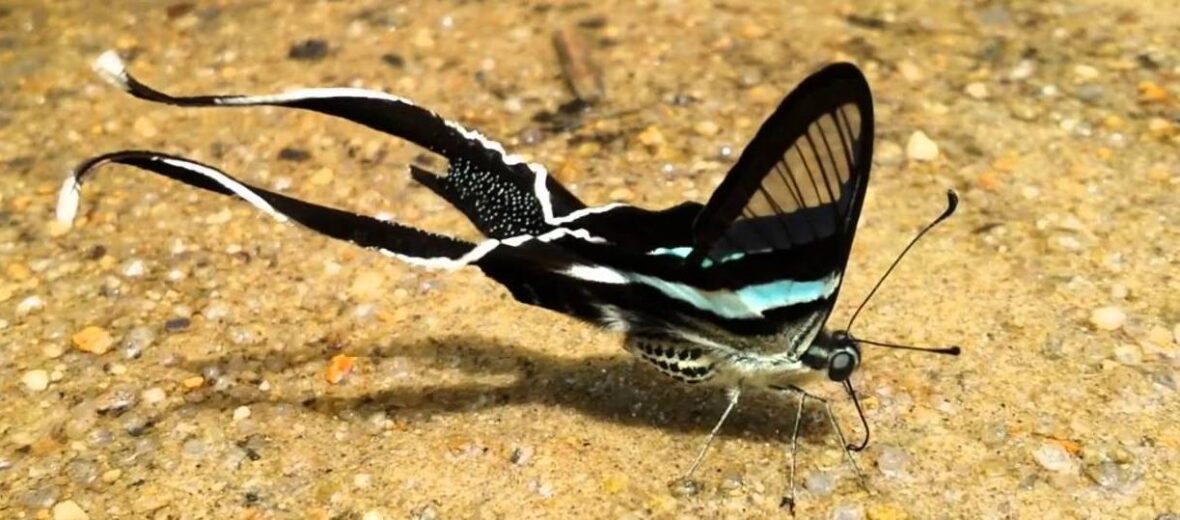
The green dragontail butterfly hails from southern and southeastern Asia, primarily in Sumatra, Java, Sulawesi, & Borneo regions. They are a member of the swallowtail family. These butterfies are not only beautiful but have totally transparent portions of their wings! Male dragontails suck up a great deal of water from which the dissolved minerals are filtered and the water squirted from the anus. Yummy. While feeding they vibrate their wings rapidly but pause from time to time to rest. This article is on special request from my good friend Ernie.
First the Stats…
Scientific name: Lamproptera meges
Wingspan: Up to 2.2 inches, plus a 1.5 inch tail
Lifespan: Up to 12 days
Now on to the Facts!
1.) Dragontails live in tropical and sub-tropical rain forests, mostly near streams, waterfalls, and rivers. They also hang out on leaves found near bushes.
2.) The Green Dragontail is listed as Vulnerable, by the IUCN, in Peninsular Malaysia.
3.) They have a whirring flight pattern, due to their large wings and tails.
4.) Their chrysalis, or pupa, is stuck to a leaf’s upper surface by its cremaster (hook-like tip).
5.) These butterflies are among the smallest of the swallowtails in India.
But wait, there’s more on the green dragontail butterfly!
6.) The eggs are pale green, spherical, smooth, almost transparent and resemble the eggs of other swallowtails.
7.) Dragontails enjoy, in part, the flowers of hernandiaceae plants.
Did you know…?
The reason that their wings are transparent is because they barely reflect any light. A wide spectrum of light, from infrared to visible to ultraviolet, moves straight through the wing’s tissue.
8.) Their long tail serves as a sort of rudder when they are flying.
9.) The green coloration is from tiny scales on the wings that reflect the green hues from sunlight.
Now a Short Green Dragontail Butterfly Video!
Also, check out the Critter Science YouTube channel. Videos added frequently!
Want to suggest a critter for me to write about? Let me know here.



